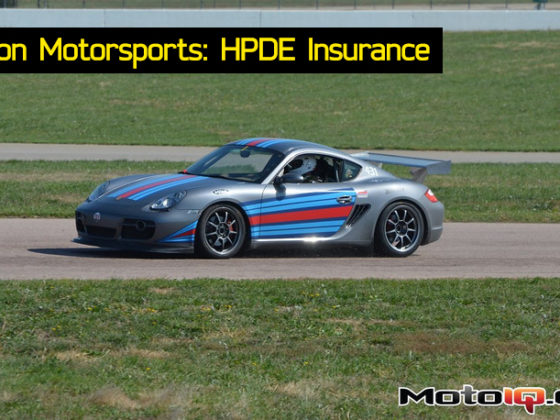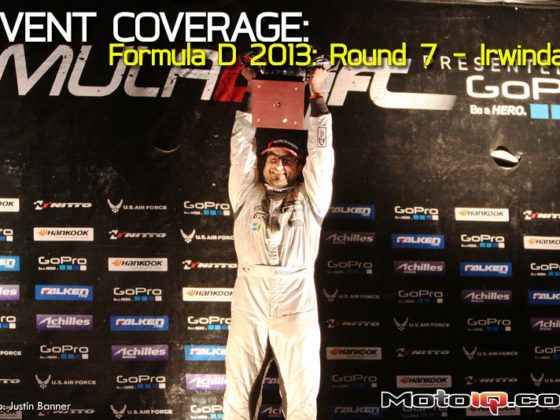,
 APR uses a cover around the turbine housing to further keep heat away from all the surrounding bits around the turbine housing. A lot of additional insulation is provided to protect the water and oil lines. Why is this necessary for maximum reliability? In this application, the turbo sits on the backside of the engine in a cramped space without much airflow. In this space are the oil and water lines. Let’s say for instance, you were just out ragging on the car and do a hot shutdown leaving a lot of heat baking back there. If the oil feed line is not protected from heat, oil can coke in the feed line. What can happen next? The next time the car is started up, the coked oil in the feed line comes loose and blocks the oil feed to the turbo. BOOM! There goes your expensive turbo. I’ve seen it happen before.
APR uses a cover around the turbine housing to further keep heat away from all the surrounding bits around the turbine housing. A lot of additional insulation is provided to protect the water and oil lines. Why is this necessary for maximum reliability? In this application, the turbo sits on the backside of the engine in a cramped space without much airflow. In this space are the oil and water lines. Let’s say for instance, you were just out ragging on the car and do a hot shutdown leaving a lot of heat baking back there. If the oil feed line is not protected from heat, oil can coke in the feed line. What can happen next? The next time the car is started up, the coked oil in the feed line comes loose and blocks the oil feed to the turbo. BOOM! There goes your expensive turbo. I’ve seen it happen before.  The compressor inlet of the GTX3576R is about four inches in diameter which is much larger than the stock turbo. There is no ideal way to connect to the larger compressor inlet short of casting a custom piece. So, APR cast a custom piece. They designed the compressor inlet attachment with an OEM like slip joint often seen on the German makes. APR went the extra step again in using some gold thermal reflective tape on the compressor inlet pipe. To maximize turbo performance, you want the air going into the turbo as cold as possible, so the reflective tape was added to prevent heat transfer from radiation getting into the intake air. Again, it’s this extra detail which makes this kit so badass.
The compressor inlet of the GTX3576R is about four inches in diameter which is much larger than the stock turbo. There is no ideal way to connect to the larger compressor inlet short of casting a custom piece. So, APR cast a custom piece. They designed the compressor inlet attachment with an OEM like slip joint often seen on the German makes. APR went the extra step again in using some gold thermal reflective tape on the compressor inlet pipe. To maximize turbo performance, you want the air going into the turbo as cold as possible, so the reflective tape was added to prevent heat transfer from radiation getting into the intake air. Again, it’s this extra detail which makes this kit so badass. The downpipe coming off the turbo is cast stainless steel with a nice and smooth radius bend. It is stainless steel for reliability and has a gentle bend for maximum flow performance. If you were wondering why the downpipe is not coated, it is because the exhaust gas coming out of the turbo has been cooled significantly. Basic thermodynamics says when you expand a gas, it cools down. A turbine is an expander, so as it extracts energy from the exhaust flow, it also cools the exhaust flow.
The downpipe coming off the turbo is cast stainless steel with a nice and smooth radius bend. It is stainless steel for reliability and has a gentle bend for maximum flow performance. If you were wondering why the downpipe is not coated, it is because the exhaust gas coming out of the turbo has been cooled significantly. Basic thermodynamics says when you expand a gas, it cools down. A turbine is an expander, so as it extracts energy from the exhaust flow, it also cools the exhaust flow.  The mid-pipe merges the turbo flow with the wastegate flow. Notice the angle of the merge is very shallow which reduces backpressure thereby maximizing performance. Flex joints are used on both the turbo and wastegate tubes. Why? When the parts get hot and cold, they expand and contract. So the flex joints are able to absorb the expansions and contractions reducing the stress on all the other joints. Also, engines tend to vibrate quite a bit, so the joints absorb some of the vibrations. If the flex joints were not used, the mid-pipe would probably crack very quickly.
The mid-pipe merges the turbo flow with the wastegate flow. Notice the angle of the merge is very shallow which reduces backpressure thereby maximizing performance. Flex joints are used on both the turbo and wastegate tubes. Why? When the parts get hot and cold, they expand and contract. So the flex joints are able to absorb the expansions and contractions reducing the stress on all the other joints. Also, engines tend to vibrate quite a bit, so the joints absorb some of the vibrations. If the flex joints were not used, the mid-pipe would probably crack very quickly. There is only one way to ensure the reliability of a product and that’s to do durability testing. APR sent prototype kits to a number of its distributors across the world for testing. This accomplished a number of things in validating the kit. A handful of different teams were now installing the kit which gave APR feedback from different sources on the ease of installation and perhaps any changes required such as to the instructions. Also, there are typically some variations between cars from different regions of the world due to differing regulations, so test fitting the kits would identify potential issues. Different regions of the world also have differing fuel chemistries allowing APR to test its ECU calibrations on different fuels. Lastly, development miles rack up a lot faster when you have five cars running instead of only one.
In addition to the fitment and running tests of the prototype kits in the hands of its distributors, APR ran its own torture test. APR rented out Barber Motorsport Park and ran their test vehicle for three hours to simulate a typical track day. Parts that would never break in street use or drag racing have a way of failing spectacularly during extended use on a road course. You see, going full throttle for hours at a time has a way of heating up a lot of parts and baking things around the hot parts; hence the need for all the thermal insulation and protection considerations in this kit. Having had a very small helping hand in building a turbo car for the 25 Hours of Thunderhill, I can tell you many thermal and mechanical issues will rear their ugly heads on a road course going balls-out for an extended period of time. Running a test like this is far from cheap. Track rental, fuel, tires, brakes, food, coffee, Red Bull… it all adds up quickly. Running such a test is another testament to APRs willingness to spend the money required to develop the best turbo kit possible.

So I’ve shown you all the little details which make this kit stand out from anything else I’ve ever seen. How does it perform? A stock TT RS is rated at 374hp/361tq at the crank. On 91 octane, the Stage 3 kit pumps those numbers to 518hp/484tq. Throw in some 93 octane and you get 553hp/526tq. If you can get 100 octane, those numbers go up quite a bit further to 665hp/561tq. The kit has been independently tested to over 600whp. What does 600whp, Audi Quattro, and a curb weight of about 3300lbs get you? RS WORX was one of the testers for the kit before official release and they ran the quarter mile in 10.915 at 129.74mph with a manual transmission. There’s apparently a guy in England who has run a 10.7 at 136mph.
The Audi TT RS with the APR Stage 3 kit might just be the ultimate sleeper right now. You expect a GTR to be fast. You expect a 911 Turbo to be fast. You expect a ZR1 to be fast. You expect a Shelby GT500 with its racing stripes and burly supercharged V8 to be fast. But an Audi TT RS? It looks no more threatening than a BMW 3-series driven by all the sorority girls at USC (also known as the U. of Spoiled Children). Even on 91 octane, the TT RS with the APR Stage 3 kit has a better power to weight ratio than the 2014 Nissan GTR by about 9%. This kit makes the car extremely quick and also maintains reliability. The Audi Quattro certainly comes in handy in maintaining stability with all the power. Hmm… I wonder how much a used TT RS goes for…
APR 2.5 TFSI Stage III GTX Turbocharger System



